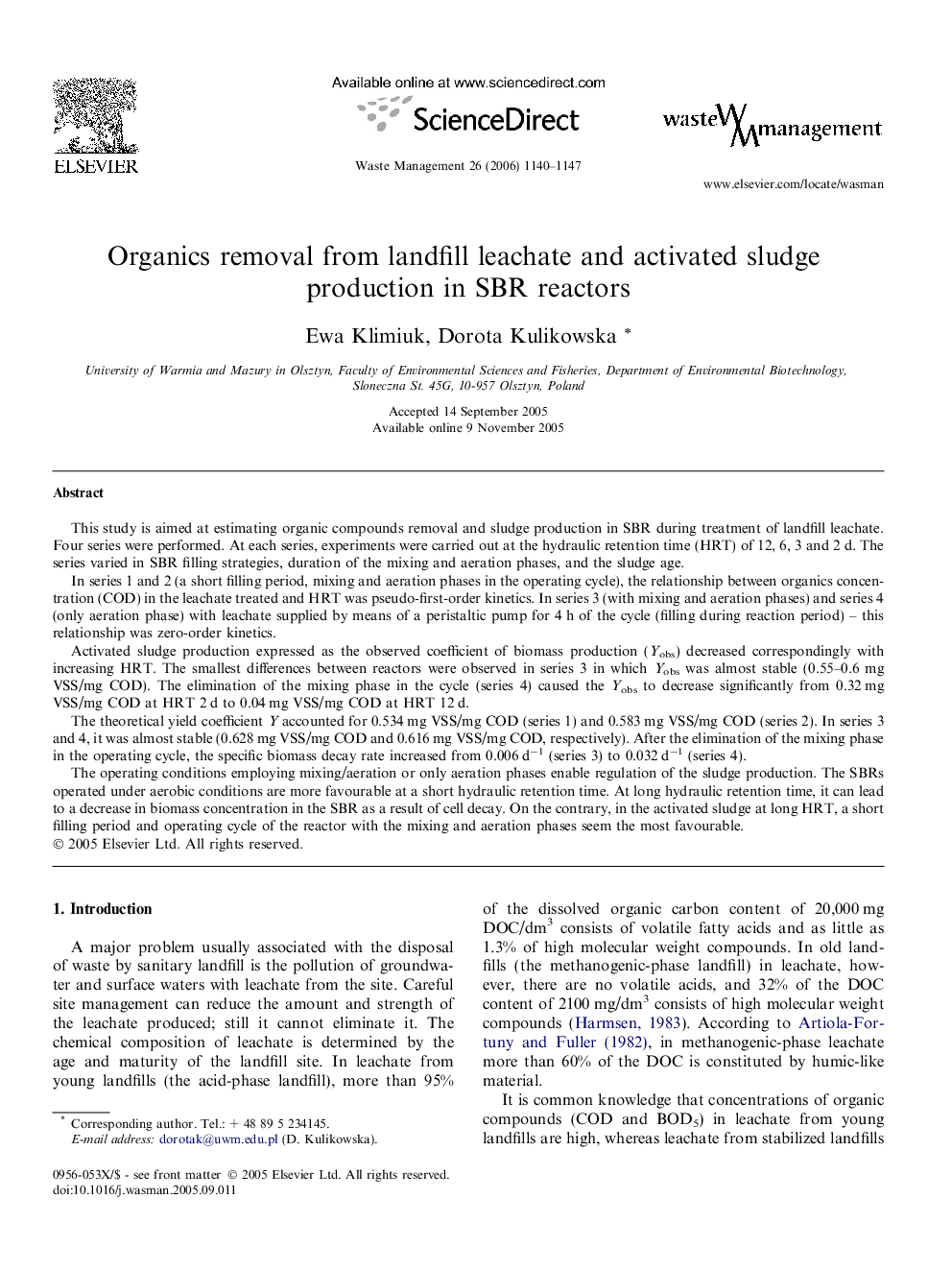| کد مقاله | کد نشریه | سال انتشار | مقاله انگلیسی | نسخه تمام متن |
|---|---|---|---|---|
| 4473871 | 1315111 | 2006 | 8 صفحه PDF | دانلود رایگان |

This study is aimed at estimating organic compounds removal and sludge production in SBR during treatment of landfill leachate. Four series were performed. At each series, experiments were carried out at the hydraulic retention time (HRT) of 12, 6, 3 and 2 d. The series varied in SBR filling strategies, duration of the mixing and aeration phases, and the sludge age.In series 1 and 2 (a short filling period, mixing and aeration phases in the operating cycle), the relationship between organics concentration (COD) in the leachate treated and HRT was pseudo-first-order kinetics. In series 3 (with mixing and aeration phases) and series 4 (only aeration phase) with leachate supplied by means of a peristaltic pump for 4 h of the cycle (filling during reaction period) – this relationship was zero-order kinetics.Activated sludge production expressed as the observed coefficient of biomass production (Yobs) decreased correspondingly with increasing HRT. The smallest differences between reactors were observed in series 3 in which Yobs was almost stable (0.55–0.6 mg VSS/mg COD). The elimination of the mixing phase in the cycle (series 4) caused the Yobs to decrease significantly from 0.32 mg VSS/mg COD at HRT 2 d to 0.04 mg VSS/mg COD at HRT 12 d.The theoretical yield coefficient Y accounted for 0.534 mg VSS/mg COD (series 1) and 0.583 mg VSS/mg COD (series 2). In series 3 and 4, it was almost stable (0.628 mg VSS/mg COD and 0.616 mg VSS/mg COD, respectively). After the elimination of the mixing phase in the operating cycle, the specific biomass decay rate increased from 0.006 d−1 (series 3) to 0.032 d−1 (series 4).The operating conditions employing mixing/aeration or only aeration phases enable regulation of the sludge production. The SBRs operated under aerobic conditions are more favourable at a short hydraulic retention time. At long hydraulic retention time, it can lead to a decrease in biomass concentration in the SBR as a result of cell decay. On the contrary, in the activated sludge at long HRT, a short filling period and operating cycle of the reactor with the mixing and aeration phases seem the most favourable.
Journal: Waste Management - Volume 26, Issue 10, 2006, Pages 1140–1147